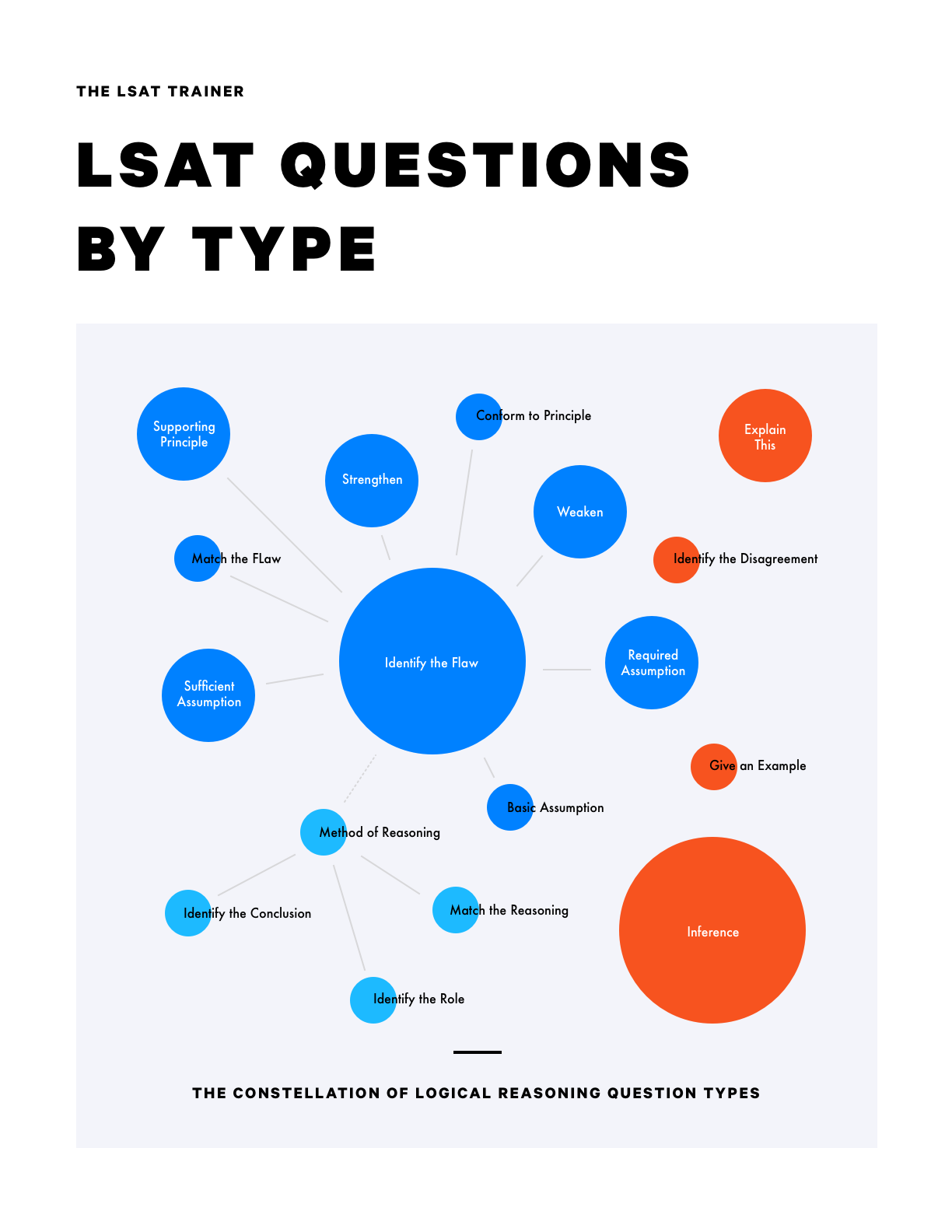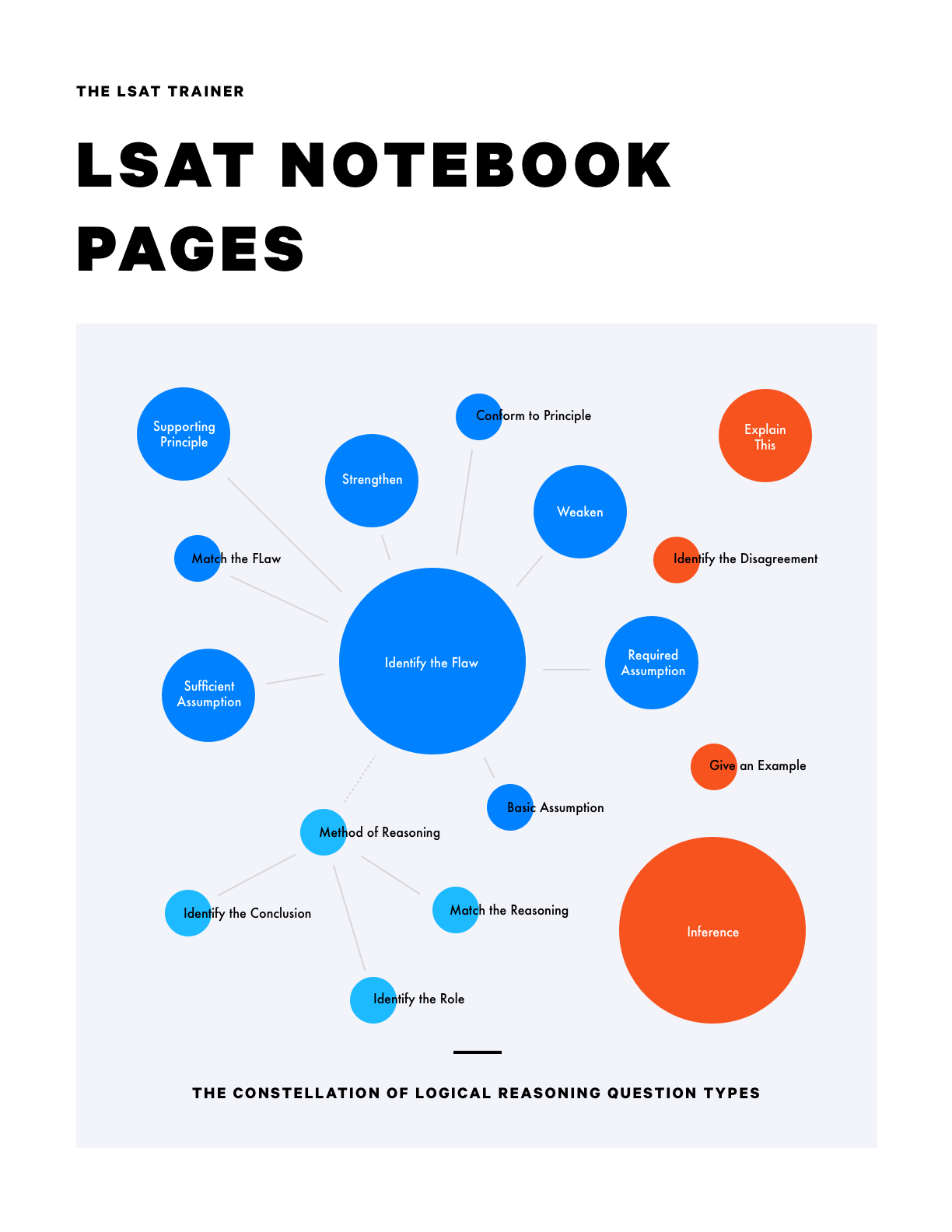Game 1 (Option 1)
Step 1
Per the given scenario, we can write out the five elements to be placed - T, W, X, Y, and Z, and we can lay out positions in three groups - F, P, and S - with an indication that each group gets at least one and up to three assignments.
Step 2
Per the first rule, we can notate that X signs with F.
Step 3
Per the second rule, we can notate that Y does not sign with F.
Step 4
Per the third rule, we can notate that Z and Y must be grouped together.
Step 5
Per the fourth rule, we can notate that if T is assigned to S, W will be assigned to S as well. If we wanted, we could also notate the contrapositive.
Game 1 (Option 2)
Step 1
Per the given scenario, we can write out the five elements to be placed - T, W, X, Y, and Z, and we can lay out positions in three groups - F, P, and S - with an indication that each group gets at least one and up to three assignments.
Step 2
Per the first rule, we can notate that X signs with F.
Step 3
Per the second and third rules, we can split our diagram into two frames, one in which Z and Y are assigned to P (frame 1), and another in which Z and Y are assigned to S (frame 2).
Step 4
In frame 1, T and W are our only remaining options for the minimum one element assigned to S. Since, per the fourth rule T signing with S means W must sign with S, we can infer that W must, whether with T or by itself, sign with S in this frame.
Step 5
For frame 1, we can notate that T is the only element not yet assigned.
Step 6
For frame 2, T cannot be assigned to S, because if it were, per the fourth rule, W would have to be as well, and if that were the case we would have no one left to assign to P.
Step 7
For frame 2, W and T are our only remaining options for the minimum one element assigned to P.
Game 2
Step 1
Per the given scenario and rules, we can write out the six elements to be placed - G, J, L, M, P, and V - and the six positions to be filled, in order.
Step 2
Per the first rule, we can notate that we must have the order P - M - L.
Step 3
Per the second rule, we can split our diagram into two frames, one in which G is before both L and J (frame 1), and another in which G is after both L and J (frame 2).
Step 4
Per the third rule, we can split each of our diagrams up further. We can split up frame 1 in order to have V before both P and G (frame 1a) or after both P and G (frame 1b), and we can split up frame 2 in order to have V before both P, which guarantees it is also before G (frame 2a), or V after G, which guarantees it is also after P (frame 2b).
Game 3
Step 1
Per the given scenario, we can write out the seven elements to be placed - S, T, V, W, X, Y, and Z, note the two types of subsets, confess (c) and not confess (cross out c), and lay out the seven positions to be assigned, in order.
Step 2
Per the first rule, we can place T into the third position.
Step 3
Per the second rule, we can notate that the element in the fourth position did not confess.
Step 4
Per the third rule, we can notate that W must come before S.
Step 5
Per the fourth rule, we can notate that Z must come before both X and V.
Step 6
Per the fifth rule, we can notate that no one confessed after W was questioned.
Step 7
Per the sixth rule, we can notate that two of the final three who were questioned confessed.
Step 8
Having notated the sixth rule, the only way to satisfy the third condition that S follows W and the fifth condition that no one confessed after W is to have someone confess in 5, W confess in 6, and S not confess in 7.
Step 9
We can notate that Y is not directly restricted by any of the given rules.
Game 4 (Option 1)
Step 1
Per the given scenario, we can write out the six elements to be placed - M, N, O, P, S, and T, as well as the subsets (schools) they could belong to - f, g, and h. We can also lay out the positions to be filled, in order, and we can separate out the positions for the schools from those for the two students from each school.
Step 2
Per the first rule, we can notate that S is from g.
Step 3
Per the second rule, we can notate that T is on the second place team.
Step 4
Per the third rule, we can notate that M and P cannot be on the same team.
Step 5
Per the fourth rule, we can notate that P must come before N.
Step 6
Per the fifth rule, we can notate that g must come before h. We can infer and notate that, per the first rule, this also means S cannot be on the third place team.
Step 7
We can notate that O is not directly restricted by any of the given rules.
Game 4 (Option 2)
Step 1
Per the given scenario, we can write out the six elements to be placed - M, N, O, P, S, and T, as well as the subsets (schools) they could belong to - f, g, and h. We can also lay out the positions to be filled, in order, and we can separate out the positions for the schools from those for the two students from each school.
Step 2
Per the first rule, we can notate that S is from g.
Step 3
Per the second rule, we can notate that T is on the second place team.
Step 4
Per the fifth rule, we can notate that g must be before h.
Step 5
Per the fourth rule, we can split our diagram up into three frames, representing the different ways in which P can come before N - P in 1 and N in 2 (frame 1), P in 1 and N in 3 (frame 2), and P in 2 and N in 3 (frame 3).
Step 6
In the first frame, per the third rule, we must place M into the third group.
Step 7
In the first frame, since, per the first and fifth rules S can’t be in the third group, S must be in the first group. Per the first rule, we can infer and notate from this that the first group will be subset g.
Step 8
In the first frame, the final element remaining, O, must fill the final position.
Step 9
In the second frame, per the third rule, there are two options for where to place M, and we can split the second frame further to represent these two options. M can be placed in group 2 (frame 2a) or group 3 (frame 2b).
Step 10
In frame 2a, since S can’t go in group 3, S must go in group 1 and thus O in group 3. Since S is in group 1, we can infer that group 1 is subset g.
Step 11
In frame 2b, S and O will fill the remaining two positions in either order.
Step 12
In the third frame, per the third rule, there are two options for where to place M, and we can split the third frame further to represent these two options. M can be placed in group 1 (frame 3a) or group 3 (frame 3b).
Step 13
In frame 3a, since, because of the first and fifth rules, S can’t go in group 3, S must go in group 1 and thus O in group 3. Since S is in group 1, we can infer that group 1 is subset g.
Step 14
In frame 3b, S and O must fill the remaining two positions, in group 1, and we can infer that group 1 is subset g.



